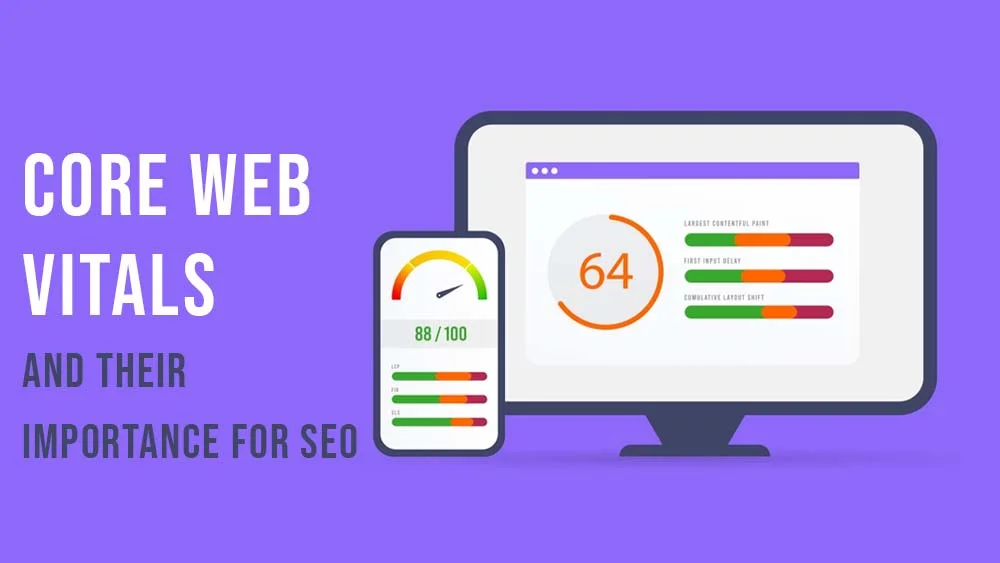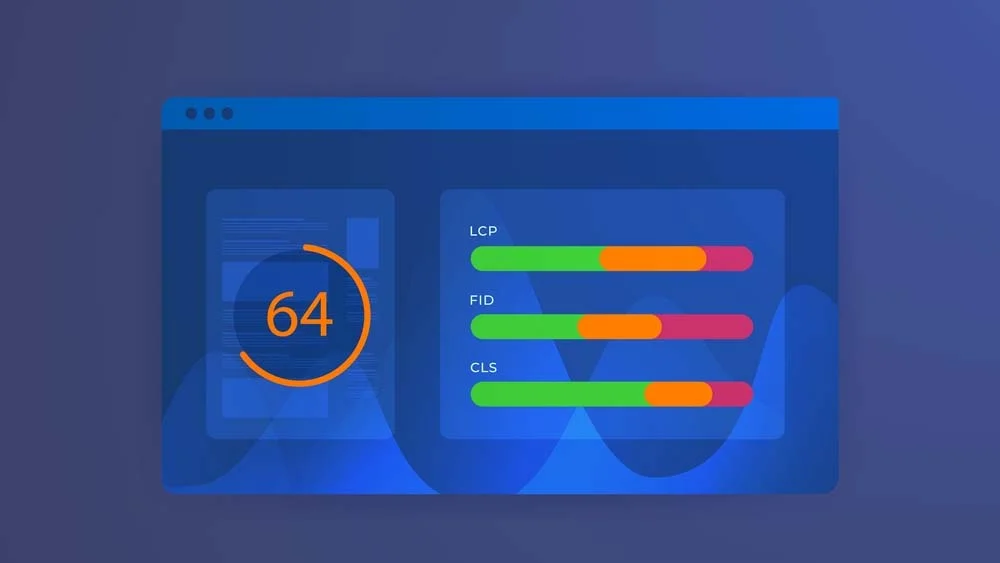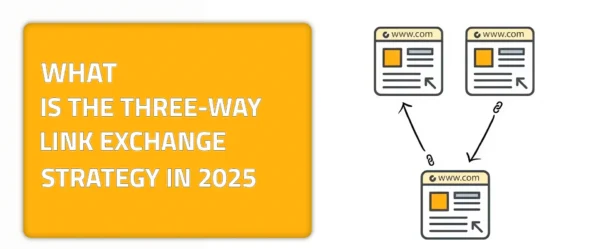We all know that there is more to websites than meets the eye. In terms of performance, we have to leave everything in our hands and focus on the fact that we need our websites to perform greatly. Why? Well, if your website doesn’t perform in a good way, your visitors are more likely to leave without having any second thoughts. Your website’s performance can actually determine its fate easily. That is because it changes the whole SEO game completely. With Google’s growing emphasis on the whole user experience journey, Core Web Vitals have entered the stage and are playing a great role as a main ranking factor that could simply make or break your site’s visibility.
So what are Core Web Vitals? and how can you actually measure them? This guide has been researched and created with professionalism, with some tips and tricks on how to handle the whole core web value “thing” that we are to uncover in this piece. Simply put, Core Web Vitals are a set of performance metrics that Google introduced to us in order to measure a website’s loading speed, interactivity, and visual stability. Search engines may push your website down the SERPs if you are having any issues with any of the things I just mentioned.
That is why you take the helping hand of core web values that will allow you to know where things went wrong and how you can change it all. Dive deep with me in this guide and let’s unravel more about this amazing and most helpful metric method. One that will help you enhance your website’s performance easily.
What are Core Web Vitals? A Quick Overview
So as I mentioned in my introduction, Core Web Vitals are simply performance metrics. These metrics, which Google created, do attempt to measure how quickly a page’s main content would load. Additionally, these metrics measure how fast that page responds and how stable its layout is as it loads. Google rolled out Core Web Vitals as part of its Page Experience update in 2021, prioritizing websites that offer smooth, fast, and visually stable experiences. To sum it up, there are three key metrics that Core Web Vitals actually focuses on, which are the loading speed, interactivity on the page, and visual stability.
But what makes them of such great importance for SEO? Google’s ranking algorithm is all about delivering the best possible results for users. These amazing and advanced metrics were first introduced to ensure that not only the content but also the usability of a certain website is up to the maximum. They simply are the warning label that can help you see that your site is lagging, glitching, or even that it has certain bugs. If some elements are not stable and they shift suddenly, they’re there to help you point out what you need to do to save the day.
The Value That CWV Offers You and Your Website
Why am I dedicating a whole guide for it, though? Like I know, I could’ve just summarized Core Web Vitals in a simple paragraph that offers you just a comprehensive definition. However, if your website doesn’t function as it should and Google notices that visitors are getting more frustrated by your site or page, they may simply drag you down to the bottom of a very far SERP.
This is something that will reduce your exposure rate and really hurt your chances of ranking higher in the future. What’s a website that ranks lastly in today’s digital landscape?
One that is not credible enough or offers something valuable for search engine surfers. That is why your website needs to excel in Core Web Vitals, as it is a key factor in both your search engine visibility rate and overall user satisfaction rate.
The Three Musketeers or Rather Metrics of Core Web Vitals
There are three main field players when it comes to Core Web Vitals. These three key metrics that tend to steal the spotlight from time to time are Largest Contentful Paint (LCP), First Input Delay (FID), and Cumulative Layout Shift (CLS). Too many abbreviations that you can’t fully comprehend? I know that you’re asking what those are and why I should care. Let me answer this as simply as possible to achieve maximum understanding of what I like to call the three musketeers of Core Web Vitals. Let’s start with LCP; this is a metric that helps you measure the speed of your elements.
Again, let me elaborate more clearly on that by walking you through a hypothetical situation. Your website may have a large element, let’s say the largest of them all, like a block of text or image. See how this element loads; does it load to look clear in no time? This is what LCP determines. If it’s sluggish, users might bounce before they even see what your website has to offer them. Advice from the tech wise? Aim for an LCP of 2.5 seconds or faster to keep your audience engaged.
What About First Input Delay (FID) and Cumulative Layout Shift (CLS)?
Next, we’ve got the FID. This is the key metric that measures your website’s interactivity rate. It simply tells you how long it takes for your site to respond after one of your users first interacts with it. For example, how long does it take them to click a certain button? Keep in mind that a delay over 100 milliseconds will increase the level of frustration for your users. This may contribute to the fact that such a delay hurts your SEO ranking chances. Our final and third musketeer is CLS.
CLS tracks your visual stability. Ever had the misfortune of clicking on something only to have the page shift and cause you to hit the wrong button? Yes, CLS is the one that helps you track down the stability of your elements’ visuals in order to eliminate such a misfortune from happening.
Tip from me to you: keep your CLS low. This will help you ensure that your users enjoy a frustration-free browsing experience. These metrics not only help you see their direct impact on both your search ranking and user experience, but also help you optimize your site’s SEO to reach its maximum capabilities.
Why Core Web Vitals Matter for SEO
Core Web Vitals play a significant role in how your website ranks on search engines, especially since Google has made user experience a cornerstone of its ranking algorithm. These performance metrics directly affect your site’s visibility and can greatly influence your overall SEO success.
Here’s why they matter:
- Impact on Search Rankings: Google uses Core Web Vitals to evaluate whether your website provides a smooth and efficient user experience. A poor score in any of the key metrics—loading speed, interactivity, or layout stability—could lower your ranking, even if your content is top-notch.
- User Experience and SEO Performance: A better user experience leads to lower bounce rates and higher engagement, which are indicators of content value and relevance. Core Web Vitals ensure that users stay on your site longer, improving your site’s authority in the eyes of Google.
- Mobile-First Indexing and Page Experience: With more users browsing on mobile, Google’s shift to mobile-first indexing makes Core Web Vitals even more crucial. A fast, stable, and interactive mobile experience boosts your page rankings while providing users with seamless browsing.
Tools and Tips to Help You Measure and Optimize Core Web Vitals
Measuring and optimizing Core Web Vitals is essential for improving your website’s performance and search engine rankings. Luckily, there are several handy tools to help you evaluate these metrics. Tools like Google’s PageSpeed Insights and Lighthouse give detailed reports on your site’s Core Web Vitals. For instance, Largest Contentful Paint (LCP) measures how long it takes for the largest element on the page to load. To optimize LCP, consider compressing images, using efficient caching, and speeding up your server response times. You’re welcome!
More tips? I got you covered. To improve FID, minimize JavaScript execution and prioritize critical resources to make your site more responsive. Lastly, Cumulative Layout Shift (CLS), as we said, measures visual stability, ensuring content doesn’t unexpectedly shift as the page loads. Reducing CLS can be achieved by setting proper dimensions for images and ads so that their placement doesn’t disrupt the user experience.
Final Thoughts!
Core Web Vitals are more than just numbers. You can consider that they are critical indicators of how well your website performs for users. As Google increasingly prioritizes user experience in its ranking algorithm, making sure that you know and understand how these metrics work is essential for staying ahead in SEO. Prioritizing Core Web Vitals is a surefire way to create a smoother, more engaging experience for your visitors. This will help you ultimately lead your website to better SEO outcomes and succeed greatly.
Ready to take your SEO strategy to the next level? At linkexchange.ai, we offer cutting-edge SEO optimization services that go beyond the basics. Our platform provides the tools and knowledge to boost your website’s performance. Get started today and see how we can help you climb the search rankings easily and swiftly as a fun hike with a group of friends.











